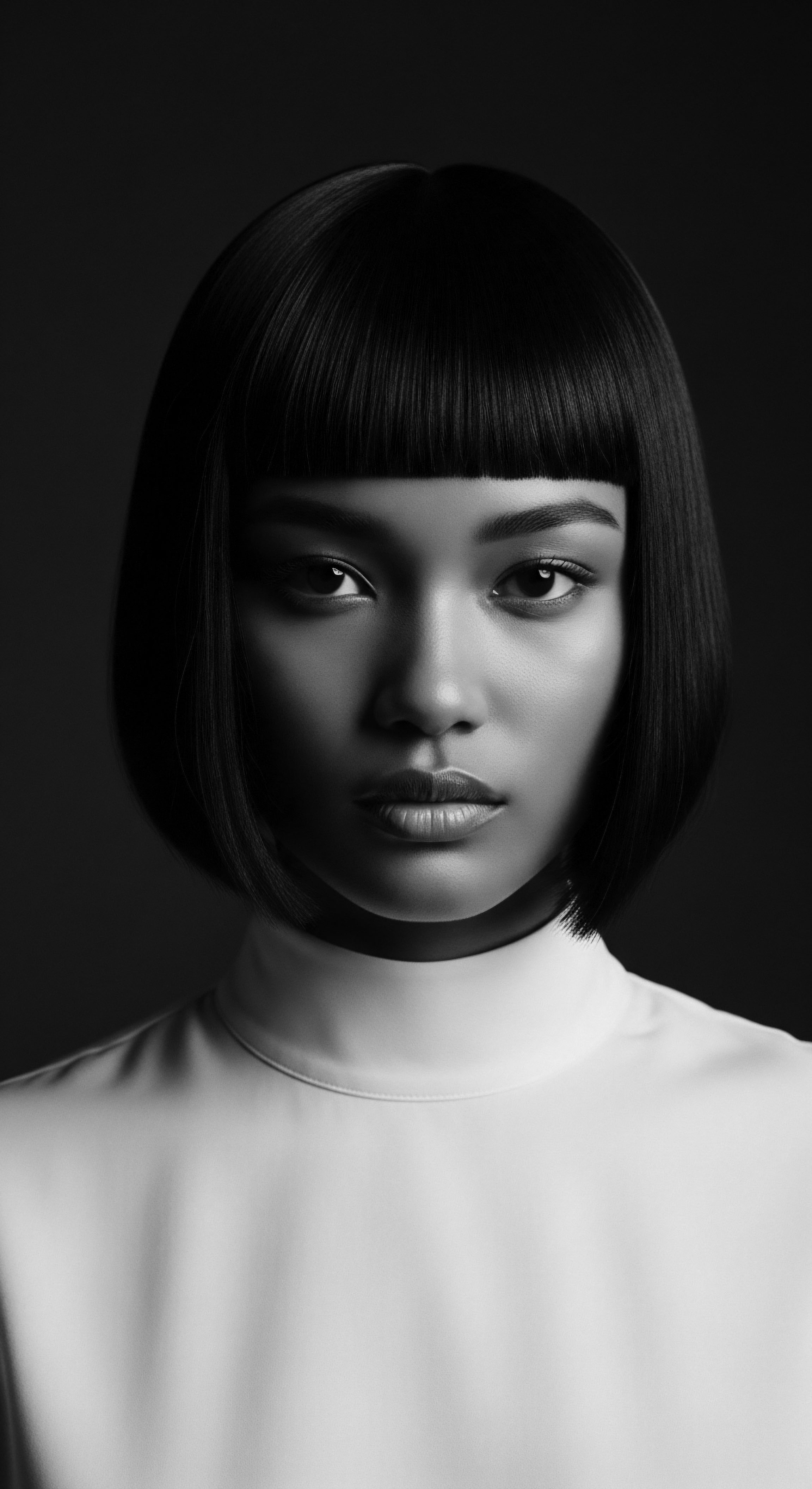
Roots
To journey into the heart of textured hair is to trace an ancestral path, a lineage etched not just in genetic codes, but in the very fabric of human experience. It is a story whispered across generations, carried in the memory of hands tending to coils, curls, and waves. When we consider how external societal pressures have reshaped choices around textured hair through the ages, we are not simply recounting stylistic shifts.
We are looking at the profound echoes of survival, the quiet acts of cultural preservation, and the enduring spirit of individuals who found selfhood despite attempts to diminish their inherent beauty. The narrative of textured hair is, at its truest core, a vibrant testament to resilience, a living archive of heritage that refuses to be silenced.
From the deepest wellsprings of our human past, the physical structure of textured hair speaks a unique biological wisdom. Evolutionary biologists propose that tightly coiled hair offered a crucial adaptation for early human ancestors in intensely sunny climates. This natural crown provided vital protection for the scalp from harsh ultraviolet radiation, simultaneously allowing for air circulation to cool the head.
This anatomical design, with its distinctive spiral shape and wider follicular pattern, became a biological signature, a silent partner in survival across the African continent. Centuries before the notion of societal ‘pressure’ twisted its meaning, this hair was a shield, a thermoregulator, a testament to nature’s intelligent design.
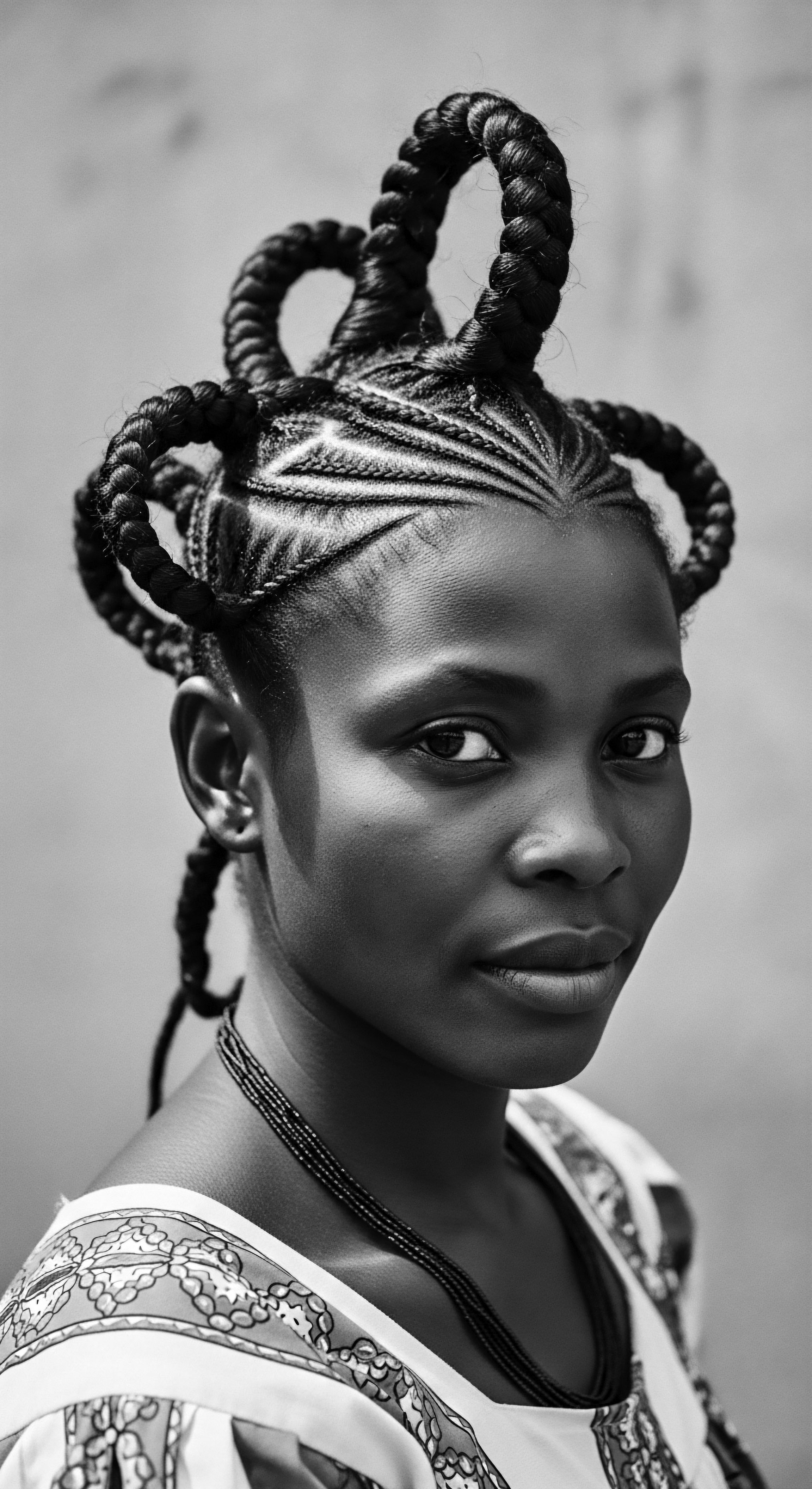
Hair’s Ancestral Structure
Hair, whether straight, wavy, or coiled, shares a fundamental biological makeup, primarily composed of keratin protein. Yet, the morphology of the follicle, the tiny pocket within the skin from which each strand grows, fundamentally dictates its outward presentation. For textured hair, this follicle often possesses an oval or elliptical shape, causing the hair shaft to twist as it emerges.
The angle at which the follicle sits within the scalp further influences the tightness of the curl pattern; a more angled or perpendicular orientation often yields tighter spirals. These structural nuances are not random occurrences; they are part of a deep ancestral inheritance.
Beyond the follicle’s form, the internal bonds within the hair’s keratin structure also play a part. Disulfide bonds, molecular connections between sulfur atoms in the keratin protein, are more abundant and distributed differently in coiled hair, contributing to its distinct spring and memory. This inherent biological architecture, far from being a flaw to be ‘fixed,’ represents an exquisite balance of strength, elasticity, and protective capacity. Understanding this elemental biology allows us to appreciate the profound truth that every coil, every kink, has a purpose, a heritage written in its very structure.
The biological architecture of textured hair is an ancient design, a testament to environmental adaptation and ancestral resilience.
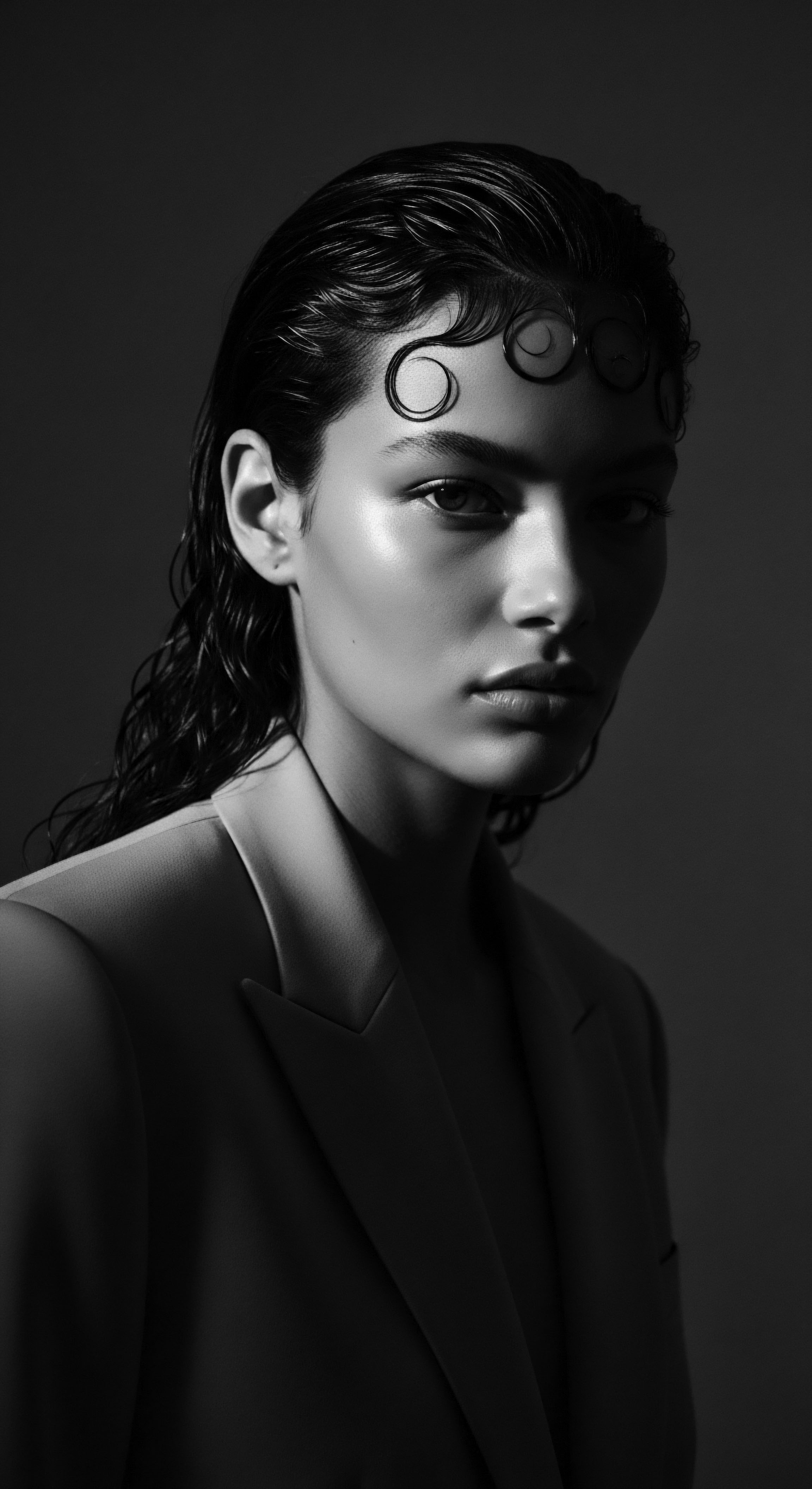
Evolution of Hair Description Systems
For millennia, the ways human communities described and categorized hair were intertwined with social standing, spiritual beliefs, and tribal identity. In many pre-colonial African societies, hair was not simply a stylistic choice; it was a profound marker, signifying age, marital status, social rank, wealth, or even spiritual leanings. These systems of understanding were organic, woven into the daily life and communal practices.
With the advent of colonialism and the transatlantic slave trade, a starkly different, oppressive classification system began to take hold. European colonizers imposed Eurocentric beauty standards, deeming textured hair as ‘uncivilized’ or ‘unprofessional.’ This destructive reframing of beauty led to terms such as ‘good hair’ and ‘bad hair,’ the latter often associated with tighter coils seen to resemble African ancestry.
The introduction of such judgmental language served to devalue the inherent beauty of textured hair and create a social hierarchy directly linked to racial subjugation. It was a deliberate attempt to strip individuals of their cultural identity and sever their connection to ancestral practices. This historical period marks a profound shift, where descriptive language became a tool of oppression, shaping perceptions and choices for generations.
- Ancient Classifications ❉ Tribal affiliation, social rank, marital status, and spiritual roles were communicated through specific styles and adornments, reflecting a deep respect for individual and communal identity.
- Colonial Imposition ❉ Terms such as ‘nappy’ or ‘unruly’ were used to dehumanize and devalue textured hair, enforcing a narrative of inferiority compared to Eurocentric straight hair ideals.
- Modern Reclamations ❉ Contemporary hair typing systems, while sometimes criticized for their origins, often seek to provide a neutral lexicon for understanding curl patterns, though the historical context of biased terminology remains a critical consideration.
| Historical Context Hair as Identity |
| Ancestral Meaning (Pre-Colonial) Signifier of community role, age, marital status, and spiritual connection, deeply respected and varied by region. |
| Imposed Standard (Colonial/Post-Slavery) A marker of inferiority, 'unprofessionalism,' and a feature to be 'tamed' or hidden to conform to dominant ideals. |
| Historical Context Hair Care Practices |
| Ancestral Meaning (Pre-Colonial) Holistic rituals involving natural elements, communal grooming, and skilled artistry to enhance health and beauty. |
| Imposed Standard (Colonial/Post-Slavery) Practices focused on alteration (straightening, relaxing) often at the expense of hair health, driven by social pressure for acceptance. |
| Historical Context The language we use to speak of textured hair holds the echoes of its journey, from a symbol of pride to a point of contention and back again. |
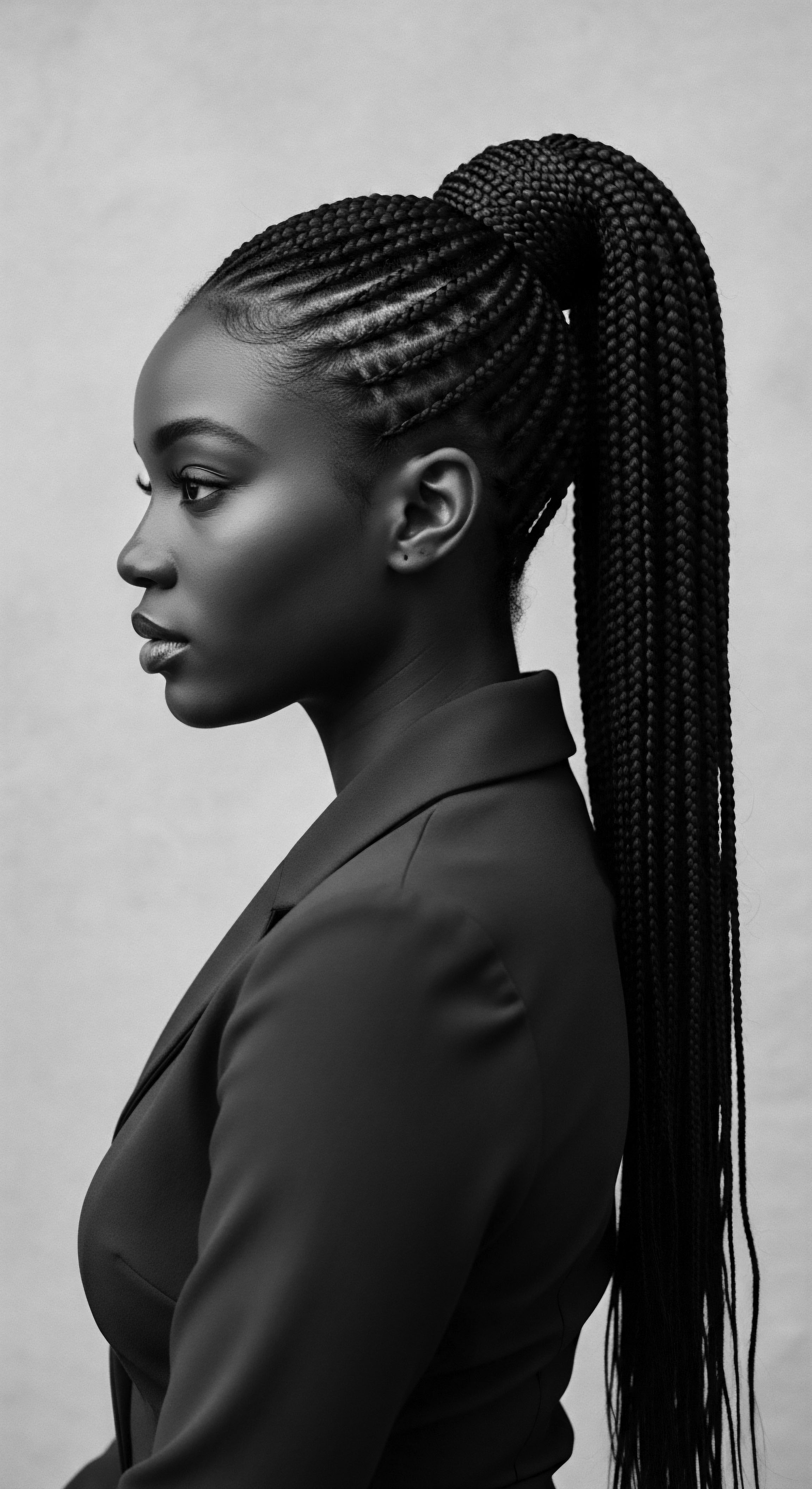
Ritual
The tending of textured hair has always been more than a simple act of grooming; it has served as a profound ritual, a living dialogue between the hands of the present and the wisdom of generations past. Across continents and through centuries, the techniques, tools, and transformations applied to textured hair have been deeply shaped by the prevailing societal tides, yet they also stand as powerful statements of cultural continuity and self-determination. The practice of hair care and styling for Black and mixed-race individuals carries a heritage of communal bonds, artistic expression, and, crucially, a resilient response to external pressures.

Ancient Echoes in Modern Styling
Long before the rise of globalized beauty standards, intricate hairstyles held immense significance within ancient African communities. Braids, twists, and locs, often passed down through familial lines, were not merely decorative. They served as intricate systems of communication, conveying details about a person’s tribal affiliation, marital status, age, wealth, and even religious beliefs.
The skill required to sculpt these styles was highly regarded, with hair groomers often holding respected positions within their societies. This rich ancestral legacy underscores the deep, inherent value placed upon textured hair as a canvas for identity and social narrative.
The transatlantic slave trade, however, initiated a brutal assault on this heritage. The forced shaving of heads upon arrival in the Americas was a deliberate act of dehumanization, designed to strip enslaved Africans of their cultural markers and identity. Despite this harrowing attempt at erasure, the spirit of ancestral practices persisted.
Enslaved individuals would braid their hair in ways that secretly mapped escape routes or concealed seeds for survival, transforming styling into a covert act of resistance and ingenuity. These hidden messages within hairstyles represent a powerful example of how cultural practices adapted under immense societal duress, becoming a silent language of defiance and hope.
Styling textured hair has historically moved beyond aesthetics, often serving as a silent language of identity and a form of resistance against dominant pressures.
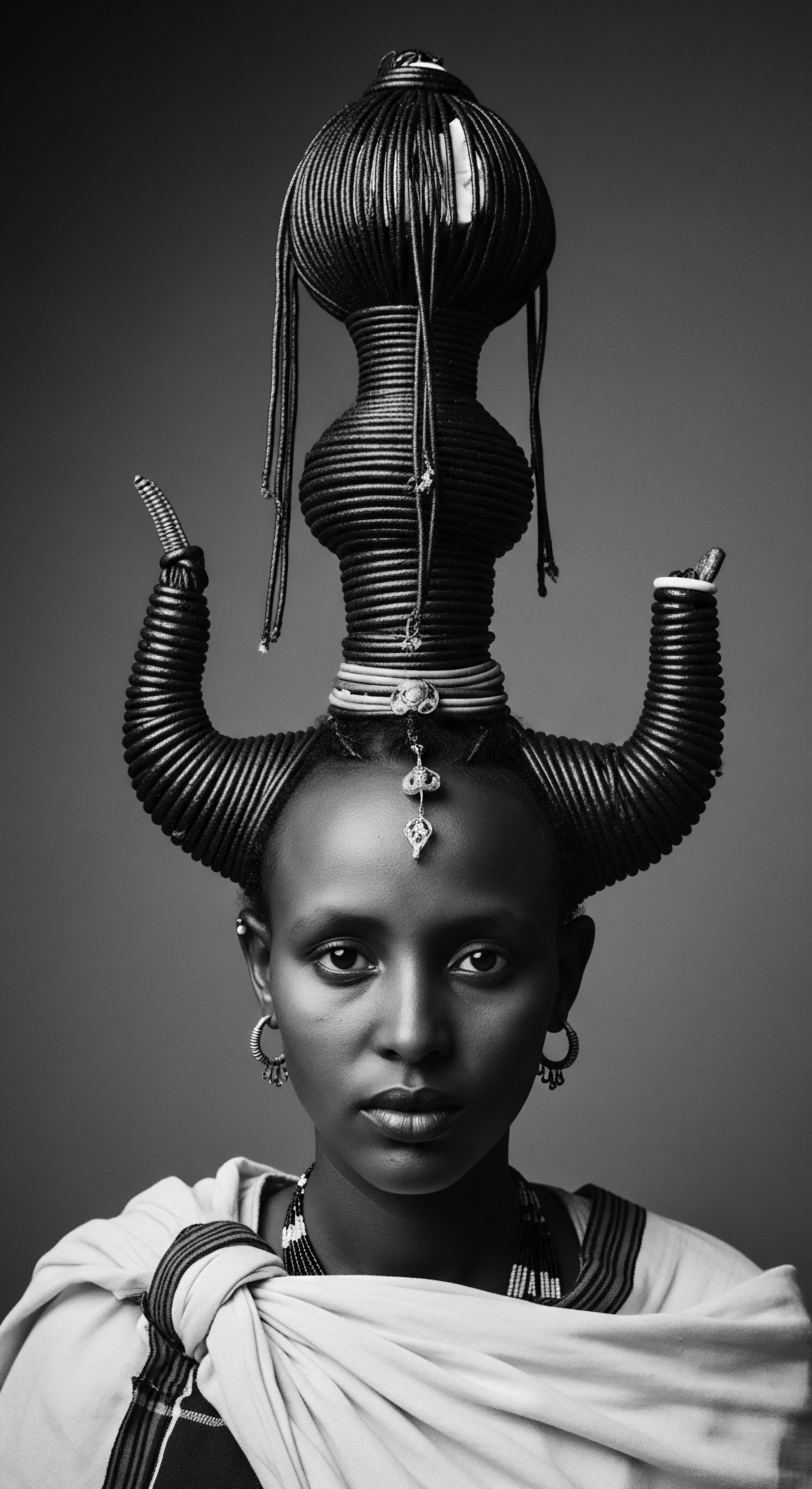
The Weight of External Standards
As the centuries wore on, the pressure to conform to Eurocentric beauty ideals grew, particularly in Western societies. Straight hair became synonymous with professionalism, respectability, and social acceptance, pushing textured hair into the realm of the ‘unruly’ or ‘unprofessional.’ This led to widespread adoption of hair straightening methods. The hot comb, popularized by entrepreneurs like Madam C.J. Walker in the late 19th and early 20th centuries, offered a temporary way to achieve straighter styles, and by the mid-1920s, straight hair was often seen as a marker of middle-class status.
Later, chemical relaxers emerged, offering longer-lasting results but often at the cost of scalp damage and hair breakage. For many, this alteration was not a choice born of preference, but a perceived necessity for social and economic advancement.
Consider the infamous Tignon Laws enacted in New Orleans in 1786. These sumptuary laws mandated that free Black women, whose elaborate and artistic hairstyles were seen as a challenge to the existing social order and a source of attraction for white men, cover their hair with a tignon or head scarf. The intent was to visually mark these women as inferior, tying them to the appearance of enslaved laborers.
Yet, in a remarkable act of defiance and creative brilliance, these women transformed the tignon into an ornate fashion statement, using luxurious fabrics and intricate knots, thereby subverting the law’s oppressive intent and turning a symbol of subjugation into a declaration of beauty, wealth, and unique identity. This historical example underscores the enduring capacity of textured hair communities to adapt, resist, and reclaim their visual autonomy.
The mid-20th century saw the Civil Rights Movement and the Black Power Movement ignite a profound shift. The Afro, in its unapologetic natural form, became a powerful symbol of racial pride, self-acceptance, and a rejection of Eurocentric beauty norms. This period marked a powerful reclaiming of ancestral aesthetics, with hair becoming a political statement of Black identity and unity.

Relay
The journey of textured hair, particularly within Black and mixed-race communities, represents a profound relay of wisdom—a handing down of care practices, resistance strategies, and identity affirmations across generations. This section delves into how societal pressures have continuously shaped, challenged, and ultimately strengthened this inherited knowledge, particularly in the realm of holistic care, nighttime rituals, and problem-solving, all while remaining deeply rooted in ancestral understanding.

Holistic Care from Ancient Traditions
The concept of holistic hair care is not a modern invention; it echoes ancient African wellness philosophies that recognized the interconnectedness of hair health with overall well-being. Traditional practices were often rooted in the local environment, utilizing indigenous herbs, oils, and clays for nourishment and protection. For instance, women of the Basara Arab tribe in Chad have for centuries used a traditional blend of natural herbs, including the powdered Croton zambesicus plant, known as Chebe powder, mixed with oils to coat their hair.
This practice, passed down through generations, primarily aids in length retention by preventing breakage and locking in moisture, rather than stimulating new growth, a testament to practical, preventative care. Similarly, shea butter, derived from the karite tree, has been a staple across the Sahel belt, used not only for skin but as a moisturizing base for hair, packed with vitamins for protection.
The forced migration and enslavement of African peoples disrupted many of these traditional practices, severing access to native ingredients and communal grooming rituals. Yet, the ingenuity of those in the diaspora led to adaptations, often involving locally available alternatives or the continuation of techniques in modified forms. The resilience in preserving these fragments of ancestral wisdom speaks to a deep connection to heritage, even when under severe duress. The knowledge of how to care for textured hair in its natural state, often deemed ‘unmanageable’ by dominant society, was maintained through family networks and community sharing, a quiet form of resistance against imposed beauty ideals.

Nighttime Rituals and the Fabric of Protection
The nighttime care of textured hair, particularly the ritual of wrapping and protecting it, carries a significant cultural and practical heritage. For those with coiled and coily hair, preserving moisture, preventing tangles, and maintaining style overnight are essential elements of health and ease. The use of head coverings has historical precedents, dating back to various African traditions where headwraps signified status, modesty, or spiritual connection.
In the diaspora, these coverings took on additional layers of meaning. While the Tignon Laws forced coverings, the spirit of practical hair preservation was always present.
The modern bonnet, often made of silk or satin, descends from a lineage of head coverings used to safeguard hair. These materials minimize friction, a key culprit in breakage for delicate textured strands, and help retain the hair’s natural moisture, which is often more prone to evaporation than straighter hair types. This routine, passed from mother to daughter, aunt to niece, functions as both a beauty practice and a quiet act of self-care, a way to honor the hair’s structure and heritage. It reflects a communal understanding of the unique requirements of textured hair, a wisdom refined over generations facing pressures that often denied space for its natural presentation.
Hair care practices, from ancient remedies to modern rituals, embody a continuous exchange of knowledge, safeguarding strands and cultural memory alike.
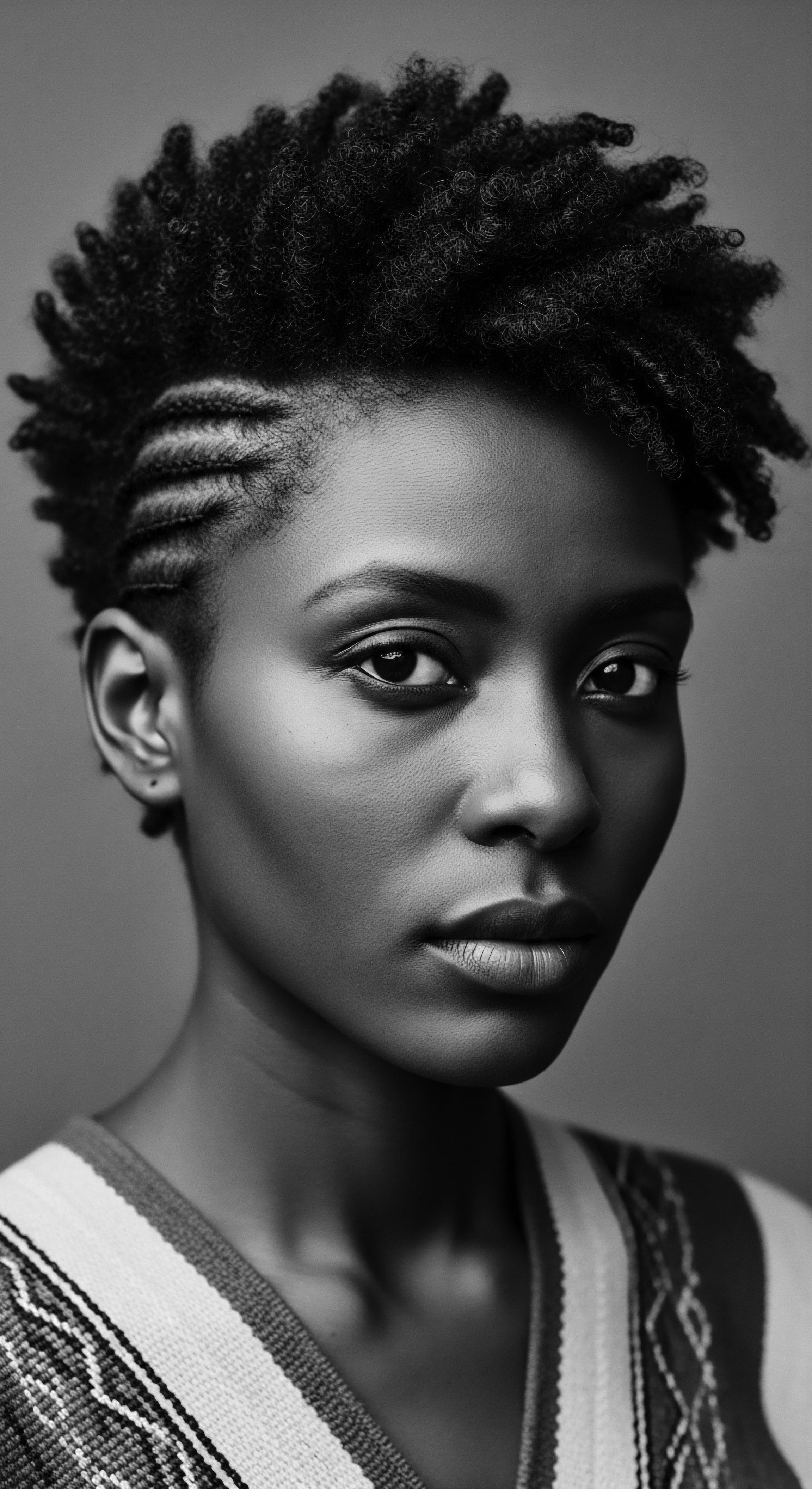
Solving Hair Challenges Across Time
Societal pressures have not only influenced hair choices but also created and exacerbated specific hair challenges for textured hair. The historical drive to conform to Eurocentric standards led to widespread use of harsh chemical straighteners or hot tools, causing significant damage like breakage, scalp burns, and hair loss, including traction alopecia or central centrifugal cicatricial alopecia. For generations, these issues were often seen as inherent problems with textured hair itself, rather than consequences of oppressive beauty standards.
The contemporary movement towards embracing natural texture involves a rediscovery of traditional solutions alongside scientific understanding. This includes a return to nourishing oils, conditioning treatments, and protective styling methods that minimize manipulation and shield hair from environmental aggressors. The problem-solving approach has shifted from altering the hair’s fundamental structure to nurturing its intrinsic health.
- Chebe Powder ❉ Used by women in Chad, a blend of herbs and seeds applied to the hair to reduce breakage and retain length.
- Shea Butter ❉ A versatile emollient from the karite tree, used for deep conditioning, moisture sealing, and scalp health across many African cultures.
- Rhassoul Clay ❉ Sourced from Morocco, a cleansing clay that purifies the scalp and hair without stripping natural oils, maintaining balance.
| Historical Pressure/Challenge Pressure to straighten, leading to damage. |
| Traditional/Ancestral Response Resilient protective styling and use of natural balms for preservation. |
| Modern/Reclaimed Approach Focus on low-manipulation styles, chemical-free care, and strengthening treatments. |
| Historical Pressure/Challenge Limited product availability. |
| Traditional/Ancestral Response Reliance on locally sourced, multi-purpose natural ingredients for cleansing and moisturizing. |
| Modern/Reclaimed Approach Growth of specialized product lines catering to diverse textured hair needs, valuing traditional ingredients. |
| Historical Pressure/Challenge The challenges posed by societal pressures have continuously shaped the ingenuity and determination in textured hair care practices. |

Reflection
The story of textured hair, as it bends and flows through the currents of societal expectation, is a saga of enduring heritage. It speaks of a soul woven into each strand, a living library of communal wisdom and individual spirit. Every curl, every coil, every resilient wave carries within it not only the blueprint of its biology but also the layered experiences of ancestors, adapting, resisting, and ultimately, triumphing. To gaze upon textured hair today is to see the echoes of ancient ceremonies, the silent acts of defiance against oppressive laws, and the vibrant declarations of selfhood that bloom even in the harshest climates.
The pressures of the world may have attempted to dictate its form, to diminish its inherent glory, but the rich, deeply rooted heritage of textured hair persists, a powerful declaration of beauty, strength, and an unbroken connection to the past. It is a constant reminder that true radiance springs from honoring one’s authentic self, a timeless truth held within every textured strand.
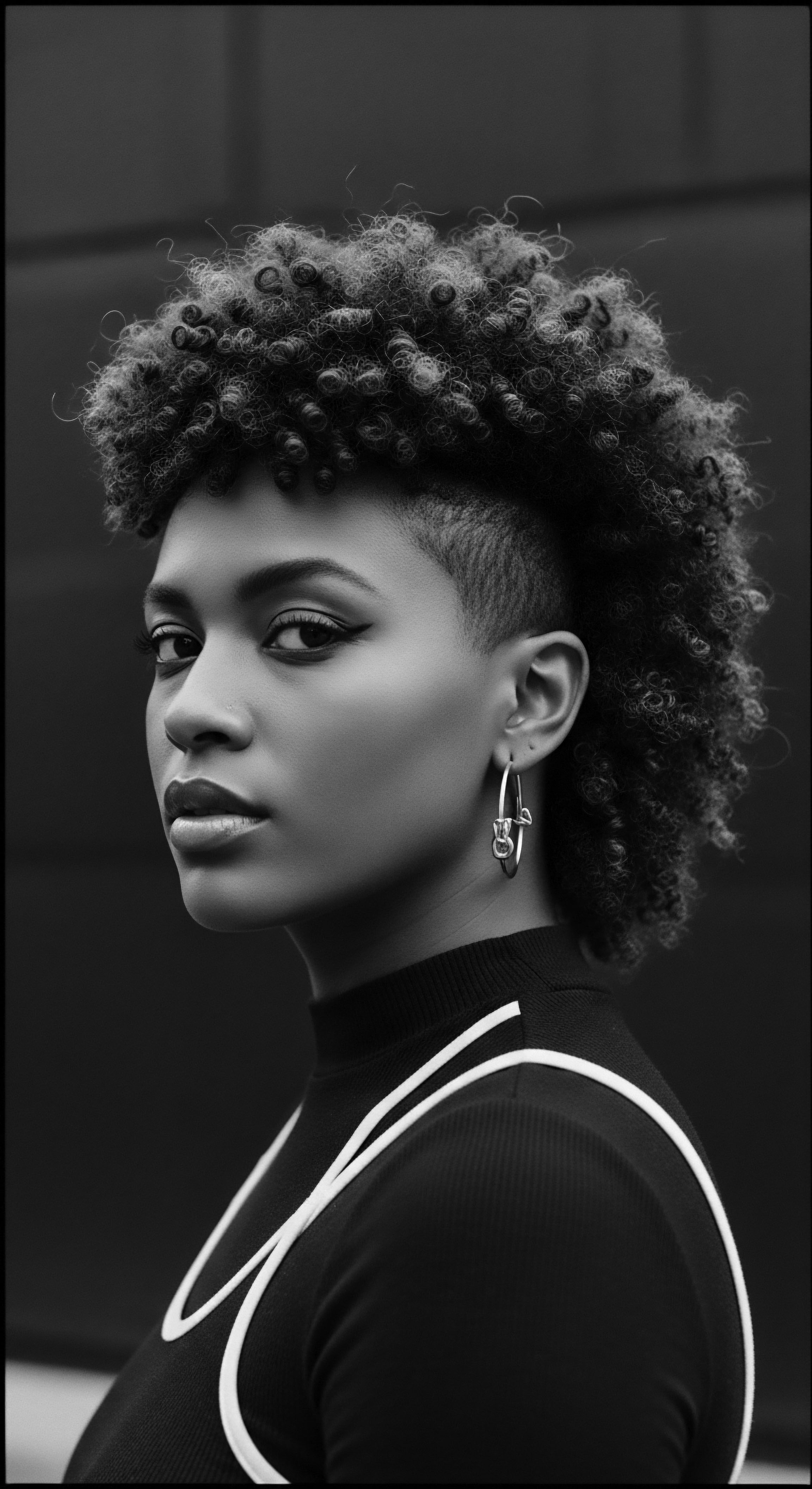
References
- Byrd, A. D. & Tharps, L. L. (2014). Hair story untangling the roots of black hair in America. St. Martin’s Griffin.
- Caffrey, C. (2023). Afro-textured hair. EBSCO Research Starters.
- Dabiri, E. (2019). Twisted ❉ The Tangled History of Black Hair Culture. Harper Perennial.
- Ellington, T. N. Underwood, J. L. & Rogers-Lafferty, S. (2020). Textures ❉ The history and art of black hair. The KSU Museum.
- Gould, V. M. (1998). In full glory ❉ Creole women, the tignon, and cultural resistance in Louisiana. In D. R. Egerton (Author), Louisiana history ❉ Its culture, character, and continuity (pp. 58-75). University Press of America.
- Patton, T. O. (2006). Hey Girl, Am I More Than My Hair? African American Women and Their Struggles with Eurocentric Hair Ideals. Women & Language, 29(1), 2-10.
- Robinson, C. C. (2011). The Social Construction of Good Hair ❉ The Impact of Eurocentric Hair Ideals on Black Women’s Identity. Journal of Black Studies, 42(3), 253-270.
- White, M. (2005). The politics of black women’s hair. NWSA Journal, 17(1), 1-13.
